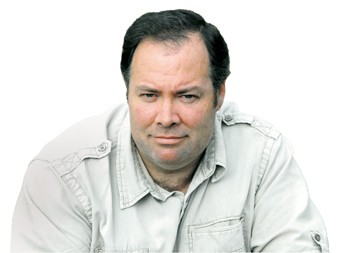The joys of stalking hinds in the Scottish hills

It felt good to be back on familiar Scottish hills. It was a bright day in late October, with snow on the higher peaks and isolated aspens glowing bright yellow in the ravines. We saw packs of blackgrouse beside the Land Rover track as we drove up past the ruins of the old lodge. Never before had I seen such a density of these birds, anywhere.
Arriving at the spying point, plenty of deer could be seen, but the light, fickle wind made planning our stalk diffi cult. This particular beat isn?t the steepest ? which suited us, as both Martin and I are not as fit as we should be. We were hoping for a relaxing day out on the hill, nothing too strenuous to start our annual week of hindstalking.
Our first chance of the day looked as if would be an ideal set-up. Kevin, the stalker, led us on a fairly moderate gradient to a firing point on a heathery knoll within easy range of a small group of hinds. Martin and I were sharing a rifle, and he was to take the first shot. He crawled up alongside Kevin, identified the chosen beast and was just preparing to fire when the deer turned and made off. We had been betrayed by the swirling wind.
This was to set the pattern for the next few stalks; we would start to close in, but the perfidious wind kept changing direction. There were packets of deer everywhere and stags roaring in every corrie. With the breeze flickering around the compass, we couldn?t avoid alerting deer wherever we went. What had started out as a seemingly easy day soon revealed itself to be something rather different.
Stepping into dead ground
Then, the day changed. Within the space of half an hour, the wind strengthened and settled into a steady westerly breeze. A few streaky clouds appeared. Whenever they crossed the sun, the temperature dropped markedly. An eagle appeared, sliding across the sky behind us. The whole character of the day seemed to alter and we set off again with a renewed sense of purpose.
Kevin got Martin within 150 yards of a party of hinds being held by a stag. From my position, 30 yards behind the firing point, I heard the shot ? but I didn?t hear a corresponding thump, which worried me. Worse still, I distinctly heard the whine of a ricochet. At the firing point, there was consternation. At the shot, the selected beast had stepped straight into dead ground and nobody saw it fall in the ensuing melee as the deer departed. We had all heard the ricochet, but there was nothing obstructing the line between the rifle and the point of impact. Yet Martin was sure his aim had been spot on. We had tested the rifle and scope earlier that day ? so what had gone wrong?
Nothing, as it turned out. As we walked in, the beast ? a yeld hind ? was found lying in a hollow, stone dead. The bullet placement was correct to within an inch. The ricochet must have occurred after the bullet had exited. The next stalk went well, and I added another, a yeld hind, to our tally. After the shot, we watched a scene akin to the Serengeti, as several hundred deer milled about the fl oor of the shallow glen in front of us.
A stiff climb brought us up the far hill, near the march, and we were into another bunch. Martin duly sniped another yeld hind ? a longish shot. While Kevin gralloched the beast, we sat and caught our breath. Young Jamie was called up on the radio. We watched as he expertly piloted the Polaris six-wheeler across the hill to us, having picked-up the other carcases en route.
The next day, Kevin took my younger son, Rory, and my godson, Sam, out on the hill. Both got a hind. For Rory, it was his first ? and on his 18th birthday, too. Years hence, I wonder whether both boys will be out on those same hills with their own children, chasing deer?








